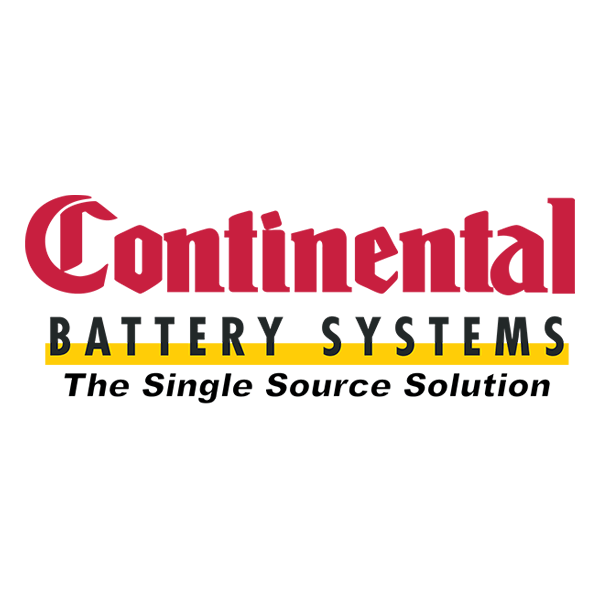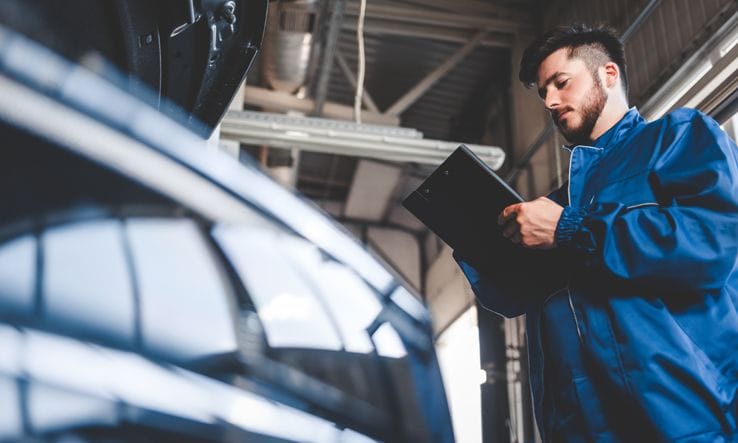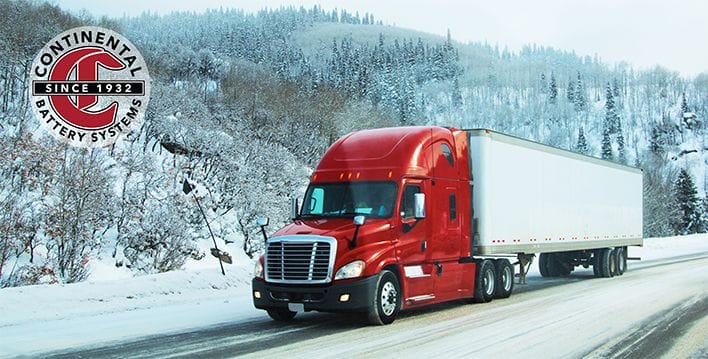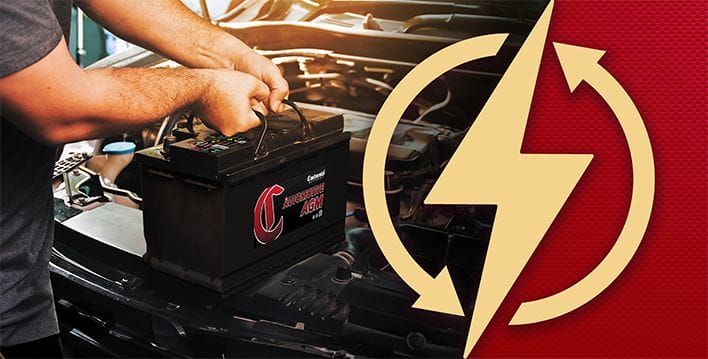
Some consumers need cost-effective batteries to power up their fleet of golf carts. Other clients may need a high-powered, advanced battery to give them the best range and fast charging for their electric vehicles. With so many different vehicle types and functions, it makes sense that there’d be a lot of batteries to choose from for each one.
But which batteries will work best for your customers’ vehicles? It all depends on what vehicle type they have and what they require it to do. Not all batteries are created equal, and knowing which battery works best for certain vehicles can make a world of difference in performance and longevity.
In this article, we’ll break down some of the most common battery types, their uses, and some pros and cons to help you find the right battery for any application.
Why Vehicles Require Different Battery Types
Batteries are designed differently to support various performance needs. Some batteries need to have a lower depth of discharge to better support stop-start functions in cars, a popular function in modern vehicles for its fuel economy benefits. Other batteries need to work in marine and recreational settings.
You can’t put the same 9V battery that you use for your smoke detector in your TV remote, and the same sentiment rings true for vehicles. While some vehicles can accept different battery types, not all batteries are interchangeable.
Let’s say your customer upgrades to a plug-in hybrid or an electric vehicle, which will require far more power than a standard battery designed for a gas-fueled car. In that case, your customer will need a powerful battery designed to do more than just get your engine started, like a lithium-ion, to keep all the electrical and computerized systems running.
Types of Car Batteries
There are many types of automotive batteries out there, depending on whether you’re powering a family SUV or a commercial semi-truck. Different batteries have different benefits and function best in certain applications.
As vehicles have more electrically powered functions — from lane assist to heated seats — that make transportation safer and more comfortable, we can expect to see growth in advanced batteries that can support higher power loads.
Flooded Lead-Acid Batteries. Flooded lead-acid batteries, or wet cell batteries, are considered conventional or traditional. These types of batteries are found in many cars today, as well as other vehicles like golf carts or forklifts.
These batteries work using a liquid sulfuric acid, or electrolyte, that creates a chemical reaction when it comes into contact with the lead plates inside the battery. That reaction causes an electrical current that starts the engine and powers onboard electronics.
Basic flooded lead-acid batteries have a lifespan of about 3 to 5 years or about 30,000 engine starts. But battery life can be impacted by extreme heat or cold. Flooded batteries may experience a reduced life cycle in warmer temperatures over 77°F, and high heat can also corrode the metal plates quicker. Freezing temperatures can reduce battery capacity.
Flooded lead-acid batteries continue to be important for many vehicles as well as for energy storage and grid use, but their share in the market is expected to decline as more advanced options — like lithium-ion batteries — take hold and as modern vehicles require more power capacity.
Lithium-Ion Batteries. Lithium-ion batteries (Li-ion) are advanced batteries that are becoming more popular for their use in electric vehicles. They offer high energy density in a lightweight battery and can be recharged again and again. This type of battery has a positive cathode and a negative anode with an electrolyte that moves between the separator in the cathode and anode. Lithium easily releases electrons in the anode that travel to the cathode, creating energy to power the vehicle’s functions.
This battery type is popular for hybrid, plug-in hybrid and fully electric vehicles because the chemical reactions can be reversed and completed again and again. The vehicle owner can recharge the battery, use the energy and recharge it again.
Lithium-ion batteries are expected to last 10 to 20 years before needing to be replaced. While they may take a long time to “die,” drivers may notice they lose charging capacity over time. The battery could take longer to recharge or a vehicle may not get as much range per charge as it once did as the battery capacity decreases with age.
Like many car batteries, lithium-ion batteries perform best in ambient temperatures of 32°F to 80°F. However, they hold up better in extreme weather than flooded batteries.
The lithium battery market is expected to grow five to 10 times by 2030. The sector does have challenges, though, as mining materials for these batteries are unsustainable, and they have a low recycling rate of about 5%, while other batteries, including flooded lead-acid batteries, have nearly a 100% recycling rate.
Enhanced Flooded Batteries. Enhanced flooded batteries (EFB) are an upgrade to traditional flooded batteries. These batteries work in a similar way to flooded lead-acid batteries, but they have thicker lead plates with a special polyfleece covering to reduce corrosion and extend battery life.
EFBs work for many types of vehicles, from standard sedans to RVs and marine vehicles. EFBs have become more popular for powering modern start-stop vehicles. Start-stop functionality means the vehicle shuts off when idling and then easily starts back up, which saves the vehicle owner on fuel costs. However, shutting off and restarting the car frequently like this can take a toll on a battery, which is why a more advanced and powerful battery, like EFB, is necessary.
EFBs have a longer lifespan compared to traditional flooded batteries. EFBs can start a car about 85,000 times, while conventional batteries may start a car around 30,000 times before needing to be replaced.
For reliability in cold and hot weather, EFBs are a good choice. These batteries work well in extreme temperatures, meaning vehicle owners can worry less about their vehicle starting on a cold winter morning or a sweltering summer afternoon.
This battery type is expected to take up a larger market share moving forward because it’s a good middle-of-the-road battery. It offers improved performance, reliability and lifespan compared to traditional flooded batteries, and it is available at lower costs compared to even more advanced batteries, like absorbent glass mat batteries.
Absorbent Glass Mat Batteries. Absorbent glass mat batteries (AGM) are advanced battery types that have fiberglass separators. These separators are absorbent, so they store the liquid electrolyte in a dry state. This configuration makes the batteries safer, especially if there is a collision. The battery design also packs in more lead plates between the absorbent separators for greater power.
AGMs are often considered an upgrade to EFBs. They can be used in similar situations, from personal vehicles to recreational uses to commercial applications, but AGMs can offer a higher power output and short charging times.
These batteries have an impressive lifespan of about seven years, or about two to three times longer than a standard wet-flooded battery. AGMs work great for vehicles in colder climates, although their heat resistance isn’t quite as good as that of EFBs.
AGMs will take a larger share of the market in the future, especially as people look for batteries that can power vehicles’ many computerized systems. AGMs are extremely safe and reliable in a number of applications, which will make them a popular choice for many vehicle owners.
Deep Cycle Batteries. Deep cycle batteries are lead-acid batteries, but they may be flooded or sealed. While flooded deep cycle batteries offer efficient charging and steady discharge, sealed batteries have minimal liquid electrolyte and, therefore, can be placed in a variety of positions. Both types are ideal for providing longer, sustained power. Sealed deep cycle batteries are often found in marine vehicles and other recreational vehicles since they are spill proof.
Deep cycle batteries last about six years, but they may last closer to three years with more use or use in extreme weather. These batteries experience slower charging and discharging rates in extreme temperatures, especially in colder weather.
This type of battery is expected to see some growth, especially for off-grid energy storage applications. In vehicles, it may have some limited growth because of the growing popularity of lithium-ion batteries.
Meeting Your Customers’ Battery Needs
Vehicle batteries are clearly not one-size-fits-all. By understanding the different battery types, you’re better prepared to stock and recommend the right battery for your customers’ specific vehicle and needs.






